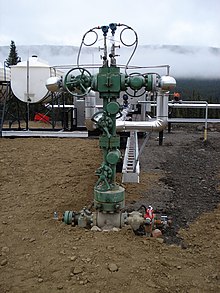Ongc Logging Manual

Ongc Logging Manual Journal Entries
Abstract Indian state-owned Oil and Natural Gas Corporation (ONGC) is nearing completion of a major data management initiative that began in 1999. This paper presents a case study of the Exploration & Production Information Network (EPINET) Project. Rather than communicating detailed facts and IT aspects, the paper will show how EPINET has dealt with the critical 'people, process, and technology??
Aspects of project implementation. It also includes a discussion of maturity levels in data management and how EPINET is helping the company to evolve along the maturity path in its information management practice. The objective of the EPINET project was setting up a live E&P information network across the length and breadth of India.
It included setting up infrastructure (machines and software) in as many as 18 sites, empowering the sites with suitably trained people, and creating and implementing policies and procedures for managing a steady flow of information. It required standardization, change management and motivating people.
It ongoingly deals with data aggregation, organizing disparate information, and providing easy and free access to information. The project targets information sources (field offices known as assets, basins, forward bases, laboratories and interpretation centers) and utilizes the 'own, populate, use?? Model to manage data quality. In short, the EPINET project brings a paradigm shift from personalized local databases in individual personal computers to a truly integrated countrywide corporate database.
The ultimate goal is to improve the quality and speed of business decisions through more efficient team collaboration. This is enabled by the availability of reliable multidisciplinary (seismic, wireline, well completion, drilling, and production) technical data. The EPINET project is expected to create substantial value for the organization. ONGC 'We are ONGC.

India's most valuable Corporate, public and private combined. We have discovered five out of six Indian basins where ONGC and everyone else produce oil and gas. Our investment abroad adds up to over 3 billion USD. The LPG cooking gas in 1 out of 6 cylinders comes from our plants, and CNG also comes from our gas. We own and operate the largest oil and gas pipelines in India. Our refineries at Mangalore and Tatipaka are running at 100% plus capacity. Our scientists and engineers operate at the cutting edge of technology.
We use one of the most powerful computing and networking systems in the country. Every year, we invest 2 billion USD to create and renew assets. Our facilities and installations are insured for nearly 12 billion USD.
ONGC, committed to the goal of making tomorrow brighter.?? - This manifesto from ONGC's public relation campaign gives a description of the company, which has undertaken the ambitious EPINET project. EPINET EPINET stands for Exploration & Production Information Network.
Fig-1 shows EPINET plans for implementation of infrastructure, software and people in 18 centers across the country. A number of key decisions were made that became fundamental conventions for project implementation. Assets, Basins and Forward Bases who generate the data, would own such data.
Owners would also manage their data. EPINET project teams would be the custodians of data. An asset-focused distributed data management organization, controlled centrally, was adopted for successful data management.
This project was initiated because a team of people had a vision, and could see the value that quick and simple access to valuable data and information assets could greatly improve the productivity and efficiency of the company. Armed and unarmed security training. The team also understood that substantive exploration and production successes and significant cost savings would come from better more confident decisions made with complete and accurate information.